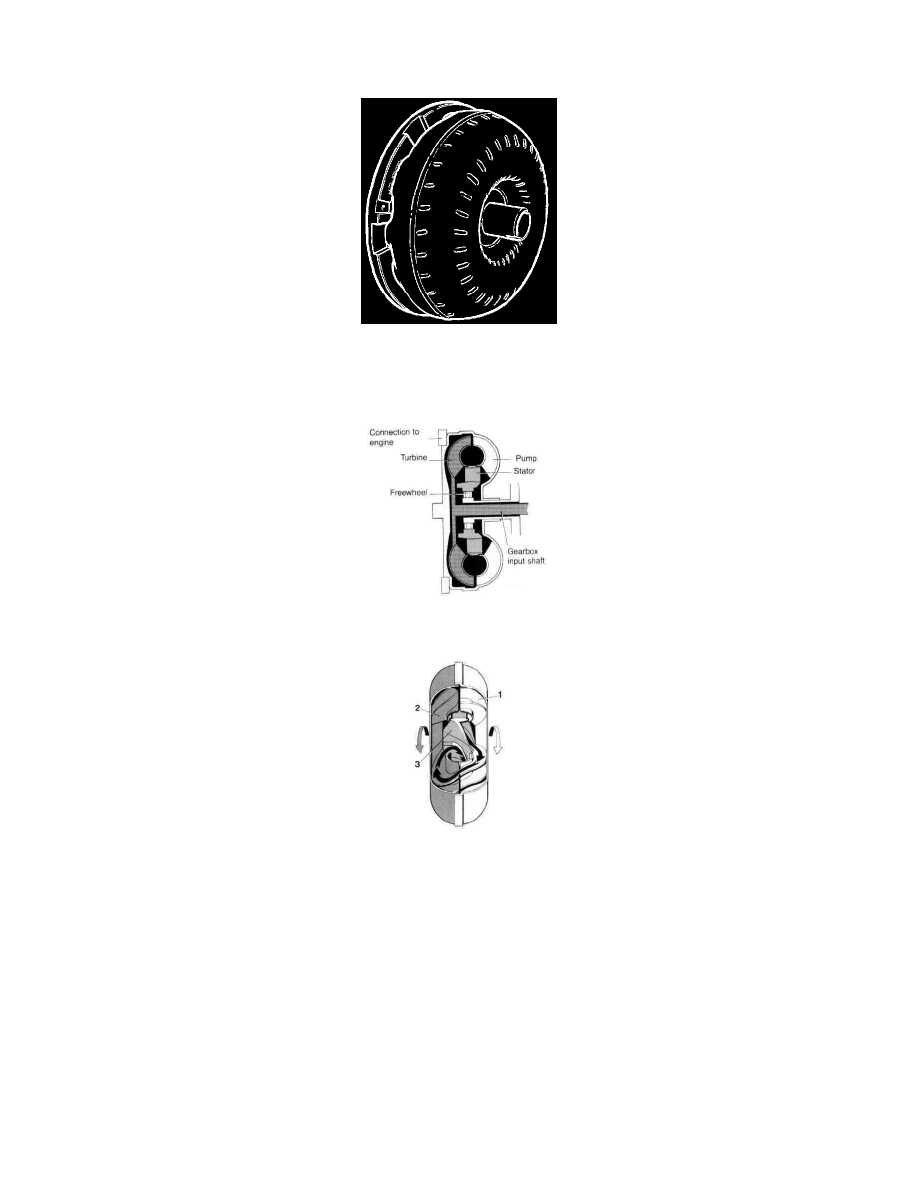940 L4-2.3L SOHC VIN 88 B230F (1992)

Torque Converter: Description and Operation
Torque Converter General
Torque Converter
The torque converter acts as a fluid coupling which transmits the drive from the engine to the gearbox, providing smooth transmission of power to
the driving wheels and adding to the torque delivered by the planetary gearbox.
Torque Converter Assembly
Torque Converter Operation
The torque converter consists of a pump, stator and turbine.
Rotating at engine speed, the pump (1) delivers hydraulic fluid to the turbine (2) through the stator vanes (3). After driving the turbine, the fluid is
returned to the pump.
The pump, stator and turbine vanes are designed so that the angle of fluid discharge from the turbine is altered by the stator vanes when a
difference exists between the pump and turbine (i.e. engine and gearbox) speeds. Under these conditions, the fluid helps to drive the pump and the
stator is locked in position by the freewheel (or one-way clutch), producing a torque multiplication varying from approx. 2:1 to 1:1.
The 2:1 ratio is obtained when the turbine (i.e. the car) is at rest. The ratio is 1:1 when the turbine speed reaches 90% of the pump speed.
Under the latter conditions, the angle of fluid discharge from the turbine is such that the stator is driven in the same direction as the turbine and
pump, and is no longer locked by the freewheel. The torque converter then functions as a fluid coupling with no torque multiplication.
However, some slip (or loss) inevitably occurs between the pump and turbine. Slip may be eliminated by introducing a "lock-up" function.
